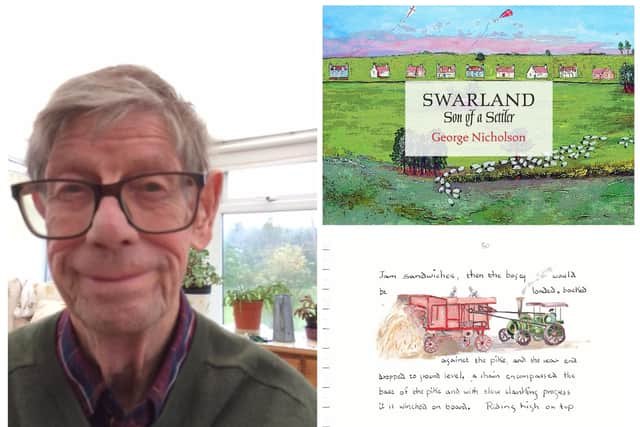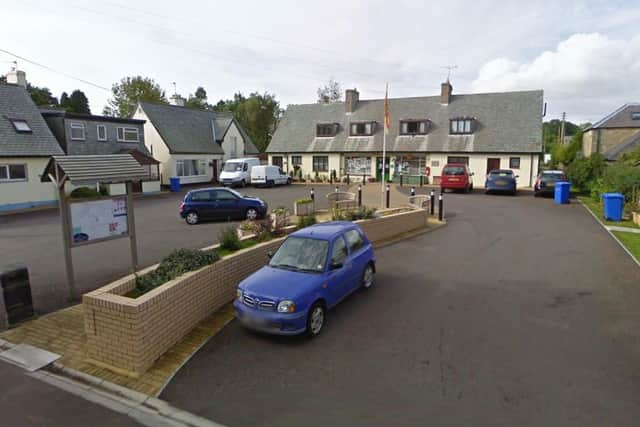Pensioner pens beautiful book drawing on lifetime's memories of Swarland
and live on Freeview channel 276
It was from a George Nicholson, of Swarland, who had written and illustrated a book about his home village and was looking for a publisher.
Having seen previous Howick Heritage publications, he had wondered if she might be able to help.
Advertisement
Hide AdAdvertisement
Hide AdNever one to miss the opportunity of bringing local talent and stories to light, Avril invited 88-year-old George to come round and bring the material for his book with him.


It was a work written over 40 years and lovingly illustrated. Avril was charmed by what she saw.
To her knowledge, no previous publications about Swarland existed. Certainly none like this.
The village has a fascinating, little known history and George, as a lifetime resident, has used its unique setting as the backdrop for the precious collection of memories of his family and childhood.
Advertisement
Hide AdAdvertisement
Hide AdRecollections of past times can be so easily lost, and their safeguarding has always been a Howick Heritage priority. George had achieved a lifetime ambition. He had found a publisher!


Only weeks later, he would see his work in print, thanks to the Heritage Group’s designer, Chris Thomas.
Situated in unspoilt countryside with views of the coast, Swarland would be put firmly on the map by Commander Clare Vyner, of Studley Royal, Ripon.
The location was chosen in the 1930s to help relieve the suffering caused by unemployment and deprivation in the industrial north east as a result of the Great Depression.
Advertisement
Hide AdAdvertisement
Hide AdVyner set up the Fountains Abbey Charitable Trust to bring people from such areas to a new and self-sufficient life in the country. It would purchase a part of Swarland Hall and its grounds in 1934 and oversee the creation of houses and cottages with modern facilities and extensive smallholdings to work.


Interviewed at city labour exchanges, skilled men were invited to visit Swarland and take up residence with their families if they liked what they saw. Temporary accommodation was provided whilst the settlers built their own houses.
There was paid work on offer too, for the men in brickworks and a saw-mill, for the women at the Swarland Tweed Mill.
George arrived in the village, aged six months with his family. Although some people were to return to the regenerating shipyards at the outbreak of war, there George would stay.
Advertisement
Hide AdAdvertisement
Hide AdAn account of a country life of the time, hand written and colourfully illustrated with illuminated lettering, figures and animals, key landmarks and seasonal activities, the freshness of George’s work sums up the joys of boyhood in such special surroundings.
Courtesy of Alexander Davidson, a previous owner of Swarland Hall once in Lord Nelson’s service, where else would one find tree plantings which represent the ships of the fleet, commemorating the Battle of the Nile, as well as other idiosyncratic references and a monument to the hero himself?
As for the incursions of the Second World War – they too were excitingly close during his childhood years. But, thankfully, in peaceful Swarland, never too close for comfort.
Thrilled to see his work in print, George intends to donate the proceeds from his book to the Alzheimer’s Society and the Vyner Park Charity.
Swarland, Son of a Settler, is on sale in Nelson’s cafe.